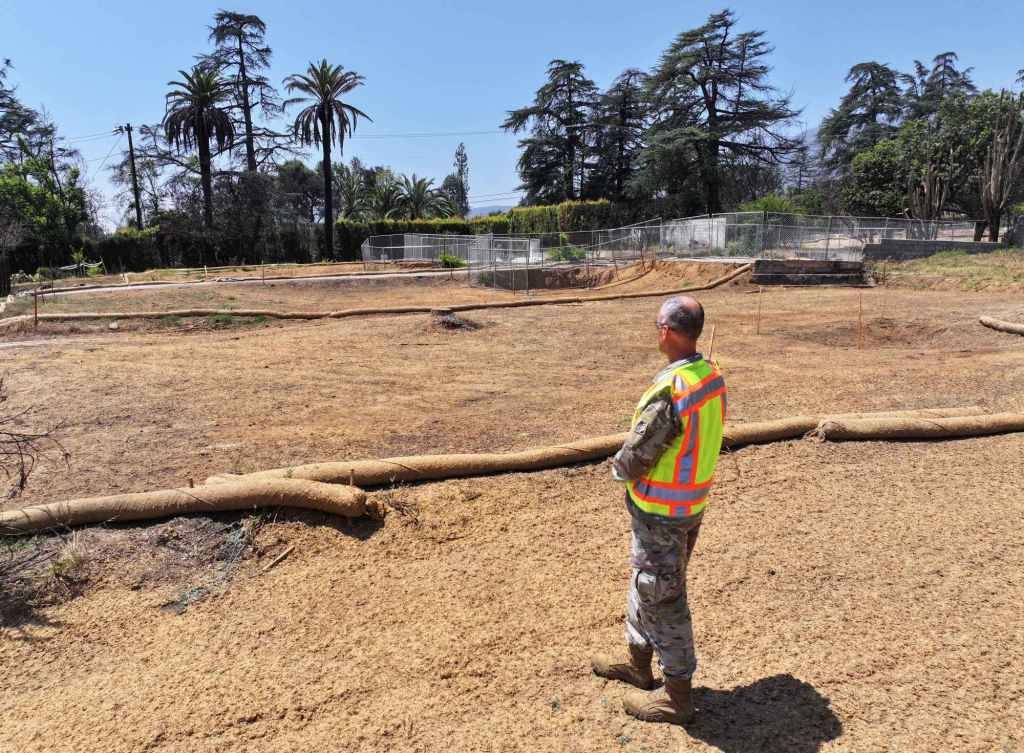Six Months After the Fires: A Community’s Resilience in Recovery
As the sun sets over Altadena, the skeletal remains of homes stand as haunting reminders of the catastrophic fires that razed the region six months prior. Binoculars in hand, Colonel Eric Swenson of the U.S. Army Corps of Engineers pauses at a vacant lot on a recent visit, his gaze tracing the contours of a neighborhood that was alive with history and community. “People here have already started to rebuild,” he reflects, highlighting the palpable determination to rise from the ashes. Yet as the rebuilding begins, unsettling questions loom over the future of residents fiercely connected to their roots.
The Unfolding Recovery Story
Six months have passed since the first flames ignited on January 7, engulfing both the Eaton and Palisades regions in Southern California. In the aftermath, over four million tons of fire ash and debris were cleared, transforming charred landscapes into potential home sites. However, while formal recovery efforts are in full swing, the emotional scars remain fresh. Are these communities ever going to feel the same? Will families return to neighborhoods that once felt like safe havens?
“Rebuilding is one part of it; healing is another,” says Dr. Melissa Fairbanks, a community psychologist. “It’s essential to understand that the psychological impact may linger far longer than the physical evidence of the fires.” Amid the debris, numerous community support groups are thriving, fostering a sense of unity among survivors.
Community Bonds Strengthened
- The Eaton Fire Survivors Network now boasts hundreds of members, providing a platform for sharing experiences and resources.
- Local gatherings at parks and community centers serve as safe spaces for healing, where residents gather to discuss hurdles like insurance claims and rebuilding timelines.
- Collaborative fundraising efforts through groups like the Altadena Rotary Club have enabled disaster relief initiatives aimed at supporting those most affected.
“Survivors have built community amid collective trauma,” notes Alice Kenney, a local historian and community activist. “There’s a collective identity emerging from this tragedy. People no longer view themselves merely as individual homeowners; they are now part of a larger narrative of survival.”
Grappling with the Stats and Impacts
As residents grapple with the emotional fallout, the practical implications of the fires are becoming painfully clear. School districts, businesses, and local governments are left navigating a landscape radically altered. About 18,000 households were displaced, and many are now forced to re-evaluate shelter options in a tightening rental market. Rent has surged across Los Angeles County, with reports indicating increases of over 7% in just two months. Affected families are seeing signs of opportunistic pricing amidst a housing crunch exacerbated by the fires.
At a recent community meeting, local business owner Jordan Rainey expressed his frustration, saying, “We can’t get back to normal without affordable housing. The last thing we need right now is for landlords to exploit this crisis.” As people share their stories, an alarming consensus emerges: the jeopardy to livelihoods extends beyond physical buildings to the very fabric of community life.
Public Health Concerns
In tandem with the housing crisis, public health has emerged as a significant concern. Soil samples from affected areas have revealed elevated levels of toxic materials, including lead and arsenic, prompting local governments to initiate extensive testing programs. “In an ideal world, we would be able to provide our residents with unequivocal safety assurances,” remarks Dr. Ella Potts, a health policy researcher specializing in environmental toxicology. “However, the complexity of the pollutants involved means that vigilance is essential.”
Assistance and Future Prospects
Ironically, while local communities have come together in the face of adversity, hope rests on the potential for federal aid. Nearly six months after the fires, California Governor Gavin Newsom has formally requested nearly $40 billion in wildfire relief funds, yet responses remain muddied by political machinations. Will the aid, when it comes, be sufficient to cover the years of loss and recovery ahead?
More symbolically, communities like Altadena have found a renewed sense of purpose. “We have this shared experience now, and it will take us forward,” said Supervisor Kathryn Barger, branding the community as “Altadena Strong.” Such collective resilience is reinforced by a determination to reclaim their homes, neighborhoods, and, most importantly, their identities.
Transformations for Tomorrow
The landscape of Altadena may have changed, but so too have the aspirations of its residents. Colonel Swenson remains optimistic about the future: “The journey won’t be short or easy, but overcoming challenges is what defines us. This community is on the mend — it’s not just about recovery; it’s about rebuilding in a way that honors what was lost.”
As each week unfolds, the pathways to recovery may still be fraught with obstacles—whether stemming from bureaucratic delays in rebuilding permissions or the emotional weight of lost homes—but residents continue to rally, embodying hope amidst uncertainty.
Six months after the fires, while much has been lost, communities rise anew—shoring up resilience, redefining identities, and, together, forging a path toward a promising future.









